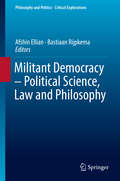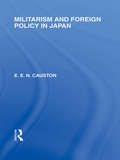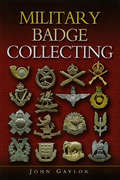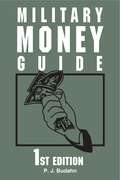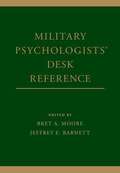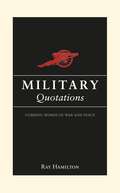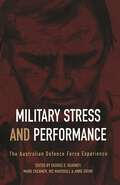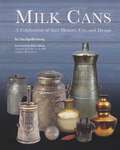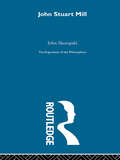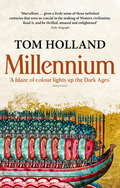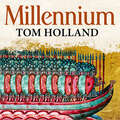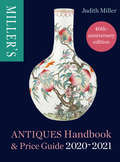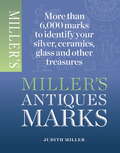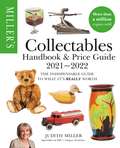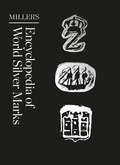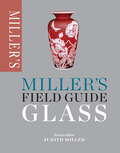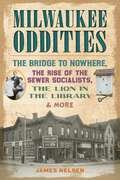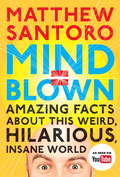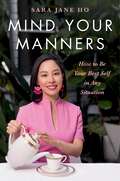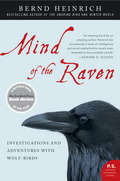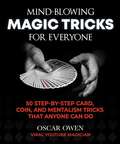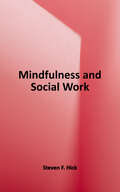- Table View
- List View
Militant Democracy – Political Science, Law and Philosophy (Philosophy and Politics - Critical Explorations #7)
by Afshin Ellian Bastiaan RijpkemaThis volume offers an up-to-date overview of the much-debated issue of how a democracy may defend itself against those who want to subvert it. The justifications, effectiveness and legal implications of militant democracy are discussed by addressing questions as: How can militant democracy measures such as party bans be justified? Why is it that some democracies ban antidemocratic parties? Does militant democracy succeed in combatting right-wing extremism? And is militant democracy evolving into an internationalized legal and political concept?Bringing together experts and perspectives from political science, law and philosophy, this volume advances our understanding of the current threats to democracy, a political system once thought almost invincible. It is especially timely in the light of the rise of illiberal democracy in the EU, the increasingly authoritarian rule in Turkey, the steady shift to autocracy in Russia and the remarkable election of Trump in the US.
Militarism and Foreign Policy in Japan (Routledge Library Editions: Japan)
by E E CaustonThe Manchurian "Incident" of 1931 led to a Japanese occupation, the birth of Manchoukuo and the withdrawal of Japan from the League of Nations. At the time it seemed as if the army and navy were exerting a supreme influence. This volume points out that this influence is not new and that there are strong reasons for its existence and continuance. It shows how it is fostered by the peculiar political structure of the country, and how, though often unintelligible to Europeans, it may be understood and accounted for in the light of the historical and political background of Japan.
Military Badge Collecting
by John GaylorAn identification guide to British Army cap badges from the Calvary and Royal Armoured Corps, the Guards, Women’s Units, Kitchener’s Army, and others.This book is a comprehensive guidebook, which will appeal to anyone with an interest in medal collecting. The book contains British Army badges from the earliest days to the present, with photographs of 800 examples.“This is an excellent text and complements the bookshelves of any researcher of the British army . . . an outstanding feat of research and I can only summarise by saying ‘Well done.’”—Military Archive Research.com
Military Money Guide
by Phillip J. BudahnComplete reference to all types of pay. allowances, bonuses, and specialty pays available to officer and enlisted personnel in all branches.
Military Psychologists' Desk Reference
by Bret A. Moore Jeffrey E. BarnettMilitary Psychologists' Desk Reference is the authoritative guide in the field of military mental health, covering in a clear and concise manner the depth and breadth of this expanding area at a pivotal and relevant time.
Military Quotations: Stirring Words of War and Peace
by Ray HamiltonFrom Churchill to Sitting Bull, history is rich in rousing rhetoric from the most celebrated military leaders, writers and observers. Whether applauding great victories or standing firm against the horrors and injustices of war, the quotations and stories of this collection will take the reader through some unique experiences of military history.
Military Quotations: Stirring Words of War and Peace
by Ray HamiltonFrom Churchill to Sitting Bull, history is rich in rousing rhetoric from the most celebrated military leaders, writers and observers. Whether applauding great victories or standing firm against the horrors and injustices of war, the quotations and stories of this collection will take the reader through some unique experiences of military history.
Military Stress And Performance: The Australian defence force experience
by George E. Kearney Mark Creamer Ric Marshall Anne GoynePeople comprise the backbone of any military force. But what happens when the stress of operations becomes overwhelming and those people fail to cope? Stress can have negative consequences for the individual, the organisation, and even for overall combat effectiveness. The Australian Defence Force has spent many years researching how to maximise individual resilience and performance in the face of extreme stress. For the first time this wealth of knowledge and experience has been brought together in one volume. This work examines the impact of highly stressful events, such as combat and peacekeeping operations, on individual troops and leaders, with a particular focus on factors that build resilience and maximise performance under stress. Managing stress is an important issue not only for the military, but equally for other high-risk professions such as the police and emergency services. This work provides a unique synthesis of a wide range of research, and clinical and personal experience, providing a coherent, integrated approach to the subject. Of particular use to mental health professionals, it will also be of interest to general readers of military and psychology books.
Milk Cans: A Celebration of Their History, Use, and Design
by Ian SpellerbergMilk cans, milk churns, or milk pails have been used for centuries which is why they are some of the most photographed of all farmyard objects. Here, for the first time, the diversity in size, shape and design of milk cans is presented in a comprehensive and full-color publication. The iconic shape of the typical milk can has inspired toymakers, artists, playwrights, novelty manufactures, and sports minded people. Milk cans often become family treasures handed down through the generations; insights about these and other social aspects of the milk can are included. In some countries milk tankers have replaced milk cans while bright shiny plastic milk cans appear to be replacing steel cans in others. This entire book is dedicated to the celebration of milk cans and their history, use, and design.
Milk Street Simple: 250 Bold, Simple Recipes For Every Season
by Christopher KimballThe James Beard Award-winning team at Milk Street delivers 200 easy, clever recipes you can just cook: the world&’s greatest culinary ideas, distilled to their essence and simplified for weeknight meals. Milk Street has spent years learning from cooks all around the world and applying those lessons to weeknight cooking here at home. This book takes the best of those great culinary ideas and pares them back to their most basic, essential elements. The result is a set of recipes that are genius in their simplicity. Each of these 200 recipes works with just a handful of ingredients and short active cooking time; these dishes are done when you need them, or hands-off so you can let them cook while you do something else. The keys are high-impact ingredients, transformative techniques, powerful flavor combinations, and layers of texture. Milk Street Simple recipes help turn a straightforward bowl of pasta or a head of roasted cauliflower into a delightful meal, with no fuss and recipes that are endlessly flexible. If you loved Milk Street&’s Cookish, this collection of recipes is for you. Chapters include: noodles and pasta grains and rice bowls soups and stews easy roasts and braises quick broils and grilling traybakes (sheet pan dinners) vegetables and salads stir fries one-pot methods and even desserts you can throw together quickly for a little sweet something to close out the day.
Mill (Arguments of the Philosophers)
by Professor John SkorupskiFirst Published in 1999. Routledge is an imprint of Taylor & Francis, an informa company.
Millennium: The End of the World and the Forging of Christendom
by Tom HollandOf all the civilisations existing in the year 1000, that of Western Europe seemed the unlikeliest candidate for future greatness. Compared to the glittering empires of Byzantium or Islam, the splintered kingdoms on the edge of the Atlantic appeared impoverished, fearful and backward. But the anarchy of these years proved to be, not the portents of the end of the world, as many Christians had dreaded, but rather the birthpangs of a radically new order.MILLENNIUM is a stunning panoramic account of the two centuries on either side of the apocalyptic year 1000. This was the age of Canute, William the Conqueror and Pope Gregory VII, of Vikings, monks and serfs, of the earliest castles and the invention of knighthood, and of the primal conflict between church and state. The story of how the distinctive culture of Europe - restless, creative and dynamic - was forged from out of the convulsions of these extraordinary times is as fascinating and as momentous as any in history.
Millennium: The End of the World and the Forging of Christendom
by Tom HollandOf all the civilisations existing in the year 1000, that of Western Europe seemed the unlikeliest candidate for future greatness. Compared to the glittering empires of Byzantium or Islam, the splintered kingdoms on the edge of the Atlantic appeared impoverished, fearful and backward. But the anarchy of these years proved to be, not the portents of the end of the world, as many Christians had dreaded, but rather the birthpangs of a radically new order.MILLENNIUM is a stunning panoramic account of the two centuries on either side of the apocalyptic year 1000. This was the age of Canute, William the Conqueror and Pope Gregory VII, of Vikings, monks and serfs, of the earliest castles and the invention of knighthood, and of the primal conflict between church and state. The story of how the distinctive culture of Europe - restless, creative and dynamic - was forged from out of the convulsions of these extraordinary times is as fascinating and as momentous as any in history.
Miller's Antiques Handbook & Price Guide 2020-2021
by Judith MillerMiller's Antiques Handbook & Price Guide remains the essential and trusted guide to the antiques market. It has earned the reputation of being the book no dealer, collector or auctioneer should be without. Compiled by Judith Miller, world-renowned antiques expert and co-founder of the book, the guide features more than 8,000 antiques.Comprehensive sections cover ceramics, furniture, glass, silver and metalwares, jewellery and objets de vertu, clocks and watches, books, Oriental antiques, textiles, toys, decorative arts and Modern Classics. Special features explain why one piece is worth more than another, show how to value an item and teach you to be your own valuer. Biographies of designers and factories give the background information you need to help date and value objects, while special 'Judith Picks' sections give fascinating background and valuation details for particularly interesting or unusual objects.
Miller's Antiques Marks
by Judith MillerMarks are one of the collector's most important tools when it comes to identifying and dating antiques. Of course, it is important to understand that they should never be relied upon completely, as many have been copied or faked. What you should rely on is experience. Handle as many antiques as you can and learn to combine your knowledge of marks with the knowledge of how an authentic piece looks and feels.Whether you are buying at auction, flea market or antique shop this is the book you need to identify and date what you find. More than 6,000 marks are organized for quick, at-a-glance reference with full-colour sections on silver, Sheffield plate, bronze figures, ceramics, glass, costume jewellery, toys and dolls. This comprehensive guide can be kept handy to identify antique finds and valuate them from a catalogue of the most common marks that you will encounter, as well as any unidentified treasures you already own.
Miller's Collectables Handbook & Price Guide 2021-2022: The Indispensable Guide To What It's Really Worth
by Judith MillerAll entries new for each edition.Miller's Collectables Handbook & Price Guide 2021-2022 is the up-to-date guide to the collectables market no dealer, collector or auctioneer should be without. Featuring more than 4,000 objects in full colour, each with a detailed description and price range, the book also shows you how to spot that rare example that may be worth twenty times more than another piece. In-depth features explain why one piece is worth more than another, show how to value an item and teach you to be your own expert when appraising everything from 20th-century glass to costume jewellery.Comprehensive sections cover a wide range of objects, with additional pages on pencils, toys, vintage handbags, trunks and costume jewellery for this edition.Every entry and image is updated for each edition to keep the book up-to-date with collecting and buying trends. Miller's Collectables Handbook & Price Guide 2021-2022 is the only full-colour, fully-illustrated collectables price guide in the world.
Miller's Encyclopedia of World Silver Marks
by Judith Miller Duncan CampbellDesigned as the essential reference tool for appraisers, collectors and dealers of silverware, the Encyclopedia is an indispensable guide for anyone researching silver hallmarks, offering clear and wide-ranging reproductions of thousands of hallmarks from more than 60 countries and regions, past and present, on every continent. It is also clearly and logically organized into two volumes for ease of reference: in the first volume are hallmarks listed by visual type and category, fully cross-referenced to information in the second volume on country of origin (in order of importance), centre of assaying or making, date and silver standard marks, special marks such as import/export marks, and selected maker's marks. Vetted by an international team of experts, the Encyclopedia thus helps you to identify silver hallmarks quickly, easily and reliably. It also includes brief historical overviews of hallmarking in each country, a description of the hallmarking process, and a guide to identifying fake and forged marks. Practical, comprehensive and up to date, Miller's Encyclopedia of World Silver Marks is an invaluable aid to identifying silverware from around the world.
Miller's Field Guide: Glass (Miller's Field Guides)
by Judith MillerMiller's Field Guides are an invaluable resource for collectors when out buying items at antiques shops, auctions or car boot fairs. They provide a fast and accurate way to recognize, identify and date antiques. In each book a simple question-and-answer checklist is provided for a wide range of key items, teaching you what to look for as well how to spot a fake or a copy. There are price codes throughout, plus concise information on makers, factories, identifying marks and the factors that affect the value of the piece.In Glass, antiques expert and bestselling author Judith Miller guides the collector through coloured, cut, pressed, etched, blown and decorated antique glass items.
Milwaukee Oddities: The Bridge to Nowhere, the Rise of the Sewer Socialists, the Lion in the Library & More (American Legends)
by James NelsenMilwaukee is full of weird borders, streets that do not line up right, creepy cemeteries and other curious things. Many locals have heard about the crooked bridges downtown, the sewer Socialists and the attempt on Teddy Roosevelt’s life. Not as many know about the time Josette Juneau saved Milwaukee, the city’s link to The Exorcist or its ghost towns like Oakwood, Saint Martin’s and Root Creek. And yes, a lion really lived inside the library. Employees used bowling balls to play fetch with it. Milwaukee-based historian James Nelsen shares joyous and amazing stories of the Cream City’s strange history.
Mind = Blown: Amazing Facts About This Weird, Hilarious, Insane World
by Matthew SantoroMatthew Santoro's originality and humor has attracted millions of fans, making him a beloved YouTube star. His weekly videos on amazing and little-known facts are eagerly anticipated by his many subscribers and followers around the world. In his first-ever book, Matthew's love of weird and wacky knowledge explodes with new facts and stories from around the planet, and beyond. Surprising, and always entertaining, Mind = Blown offers even more of Matthew's unique take on this hilarious, crazy world: The most ridiculous laws from past and presentCrazy doppelgangers of people, places, and unexpected thingsHistorical wizards who actually livedReal-life animal avengersAnd a special section: Japan Blows My Mind!From shin-kicking competitions and beer pong-playing robots, to enormous fire-balls shooting through space, you won't believe what you'll discover in Mind = Blown. But beware: there is too much astounding trivia for any one mind to contain!From the Trade Paperback edition.
Mind Your Manners: How to Be Your Best Self in Any Situation
by Sara Jane HoFounder of a global etiquette school and star of her own Netflix series Sara Jane Ho teaches readers how to thrive socially in a variety of situations, in person and online. Etiquette, Sara Jane says, is the glue that holds society together. Humans are social creatures, after all—we need connection to survive. But with global cultures in flux and the post-pandemic digital age, shadow epidemics of anxiety and loneliness are on the rise. Plus, the old rules of &“decorum&” don&’t match the times. Amidst all this withdrawal and change, social growth can feel out of reach. How do we leave the comfort of our homes, step away from our screens, and interact face to face? How do we create genuine bonds with people we&’ve just met, and how do we maintain those ties throughout our lives? Even the most resilient social butterflies among us face sticky situations—from accidentally-sent invites to unruly work and family encounters—any advice would help. In her signature cheeky yet pragmatic style, Sara Jane Ho imparts a lifetime&’s worth of lessons, pro-tips, and FAQs on social and digital etiquette across the five main microcultures in our lives: Friendship & Social Life, Work, Dating & Relationships, Family, and Food & Travel. From jumping everyday hurdles to discerning unspoken, cross-cultural cues, Mind Your Manners helps us feel the joy and transformation of social fluency—that deep comfort that comes from connection, inclusion, and presenting our best self in any situation.
Mind of the Raven: Investigations and Adventures with Wolf-Birds (P. S. Series)
by Bernd HeinrichHeinrich involves us in his quest to get inside the mind of the raven. But as animals can only be spied on by getting quite close, Heinrich adopts ravens, thereby becoming a "raven father," as well as observing them in their natural habitat. He studies their daily routines, and in the process, paints a vivid picture of the ravens' world. At the heart of this book are Heinrich's love and respect for these complex and engaging creatures, and through his keen observation and analysis, we become their intimates too.Heinrich's passion for ravens has led him around the world in his research. Mind of the Raven follows an exotic journey--from New England to Germany, and from Montana to Baffin Island in the high Arctic--offering dazzling accounts of how science works in the field, filtered through the eyes of a passionate observer of nature. Each new discovery and insight into raven behavior is thrilling to read, at once lyrical and scientific.
Mind-Blowing Magic Tricks for Everyone: 50 Step-by-Step Card, Coin, and Mentalism Tricks That Anyone Can Do
by Oscar OwenLearn to perform 50 unbelievable magic tricks that will impress and astonish any audience! Features QR codes with links to trick videos for easy learning and visual aid! This delightful book reveals some of magic's best-kept secrets, showing you step-by-step exactly how the tricks are done from multiple angles. Learn easy-yet-mystifying card tricks, awe-inspiring coin tricks, mentalism tricks for reading someone's mind, deceptive bets, and amazing visual tricks that you can do with everyday objects, including how to:Make a pen disappearLevitate a dollarSend a cup through a tableTear a napkin and restore it to its original statePut a need through a balloon without popping itCrack an apple open with your bare handsAnd more! In addition to these jaw-dropping tricks, this book provides readers with: QR Codes with trick videos for visual aidPractice and performance tipsJokes to use when performingAdditional resourcesAnd more! Ultimately, by the end of this book not only will you know fifty mind-blowing magic tricks, but you will also know exactly how to perform them confidently. The book is the perfect gift for aspiring magicians or anyone who wants to impress their family and friends!
Mindfulness and Social Work
by Steven S. HickFor the first time ever, a book has been written tying mindfulness techniques to social work practice. Editor Steven Hick has compiled this collection of essays to provide a model for the use of mindfulness in social work practice with individuals, families, groups, and communities. Focused on both mindfulness interventions and the development of mindfulness within the practitioner, this book contains exercises for use by social workers themselves or with clients.
Mindfulness for Children: 150+ Mindfulness Activities for Happier, Healthier, Stress-Free Kids
by Tracy DanielIntroduce your children to the practice of mindfulness so they can learn to reduce stress, regulate behavior and emotions, and develop a positive self-image along the way. Mindfulness and meditation are becoming increasingly integrated into everyday life as effective ways to improve both physical and mental health. Make sure the whole family—even the little ones—are embracing the full range of benefits with Mindfulness for Children. Start your family’s mindfulness practice with these exercises for achieving peace, calm, and positivity. These simple activities will help you and your child get ready for bedtime, calm down after a stressful situation, discuss your feelings in a safe environment, and more. For example, for energetic children, try a short walk or do some easy, calming yoga poses to sharpen focus. With over 150 meditations for different situations, there’s a strategy in Mindfulness for Children fit for every moment and every family.
